Have you ever come across yellow blooms in the garden that you never planted? It could be one of these Weeds with Yellow Flowers!
Weeds are really resilient and don’t need much care. So they’ll serve you better than flowers and keep your garden pretty. You can get started with these yellow flower weeds!
Weeds with Yellow Flowers
1. Bird’s Foot Trefoil
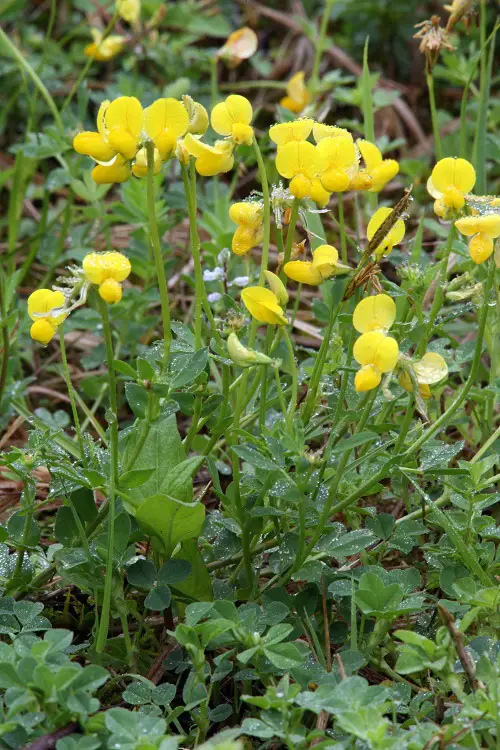
Botanical Name: Lotus corniculatus
Bird’s Foot Trefoil can grow up to 3-5 feet tall and has yellow flowers covered in tiny hair. It’s invasive, but it helps with wind and water erosion along roadsides.
2. Wild Parsnip
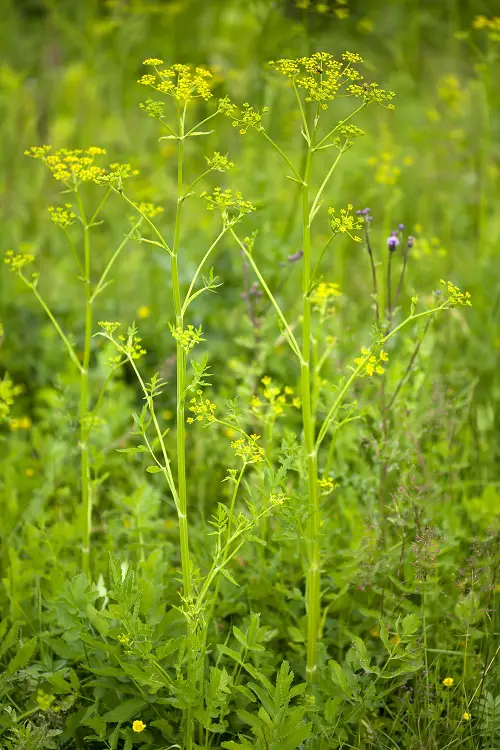
Botanical Name: Pastinaca sativa
Wild Parsnip is a herbaceous weed with tiny yellow flowers that grow in clusters. But we don’t recommend letting it grow because it can burn your skin.
3. Purslane
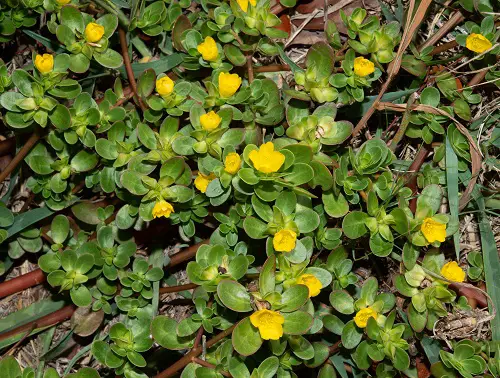
Botanical Name: Portulaca oleracea
Purslane only grows 5-6 inches in height but spreads nearly 2 feet. It’s drought tolerant and has fleshy, edible leaves and yellow flowers.
4. Canada Goldenrod
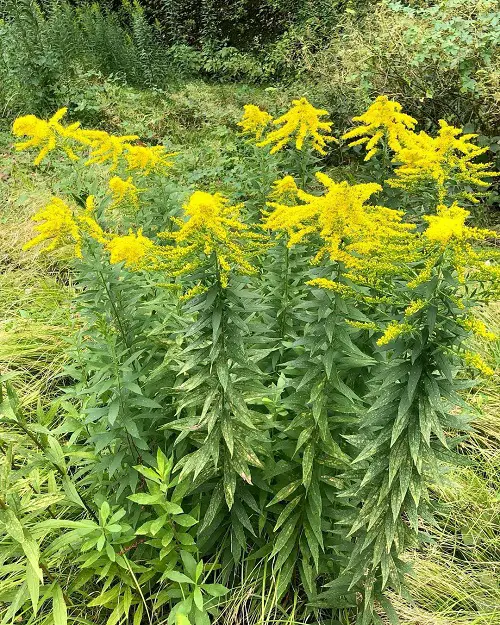
Botanical Name: Solidago canadensis
Canada Goldenrod definitely doesn’t look like a weed, but its yellow flowers grow in a pyramid-like formation. A little bit of moist soil can help it thrive.
5. Wild Radish

Botanical Name: Raphanus raphanistrum
You must have spotted these without knowing. Wild Radishes have pale yellow flowers and are common weeds that grow in vegetable gardens in spring and summer.
6. Common Evening Primrose

Botanical Name: Oenothera biennis
Common Evening Primrose has small yellow flowers that only open up in the evening. These weeds are found in woodland fields and are also used by Native Americans to treat pain.
7. Yellow Nutsedge
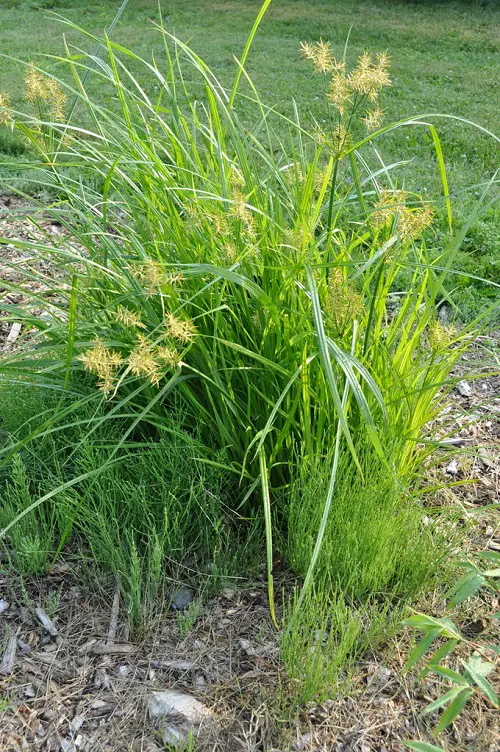
Botanical Name: Cyperus esculentus
Yellow Nutsedge has golden-brown flowers and is not exactly yellow. This weed is difficult to control as it reproduces by underground tubers and rhizomes.
8. Common Ragwort

Botanical Name: Senecio vulgaris
Common Ragwort is a part of the daisy family and has yellow flowers that look like daisies, too. But it’s toxic as it has pyrrolizidine alkaloids, which can be harmful to horses, cattle, and other grazing animals.
9. Yellow Rocket
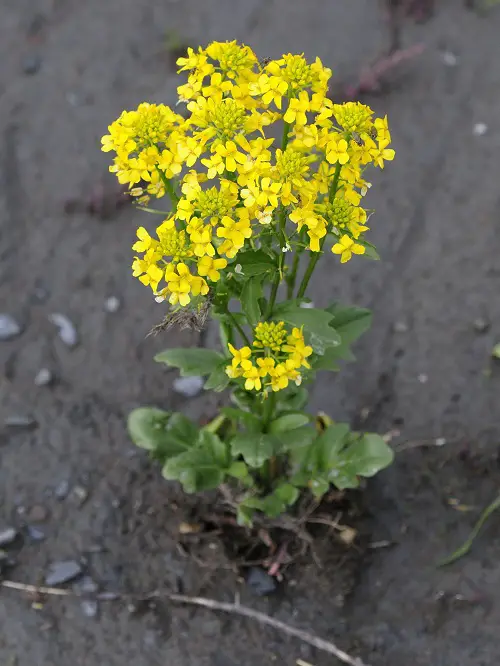
Botanical Name: Narbarea vulgaris
The Yellow Rocket weed is a low grower and has slender stems covered in bright yellow flowers. It doesn’t grow more than 8 inches tall.
10. Narrow-leaf Plantain
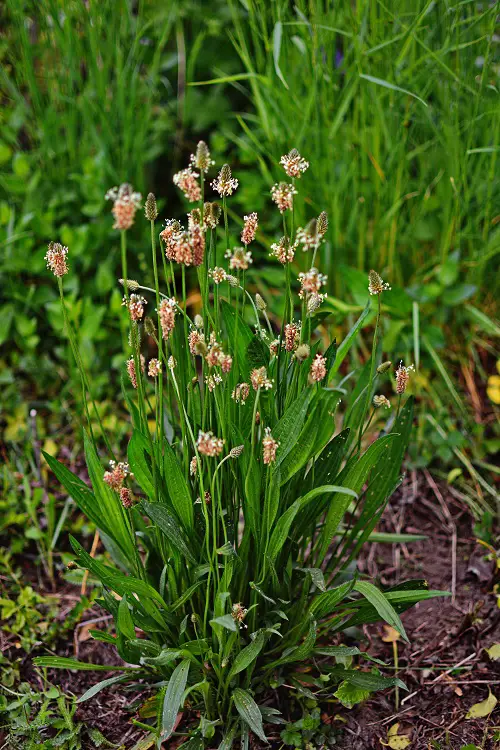
Botanical Name: Plantago lanceolata
You can spot a Narrow-Leaf Plantain with tiny, yellow blooms in almost all lawns. And the best part is you can use its leaves and seeds in salads–they’re full of vitamins A, C, and K.
11. Creeping Buttercup
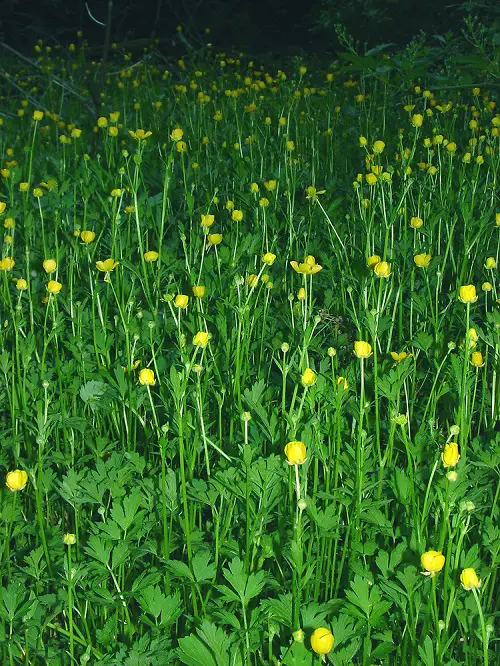
Botanical Name: Ranunculus repens
Creeping Buttercup also has yellow flowers, but the weed spreads with creeping stems that root at the nodes, forming a mat and crowding everything around it.
12. Marsh Yellowcress

Botanical Name: Rorippa palustris
Marsh Yellowcress is a common weed in wet habitats like marshes, fens, and wet meadows. It has circular foliage and bright yellow flowers.
13. Yellow Salsify
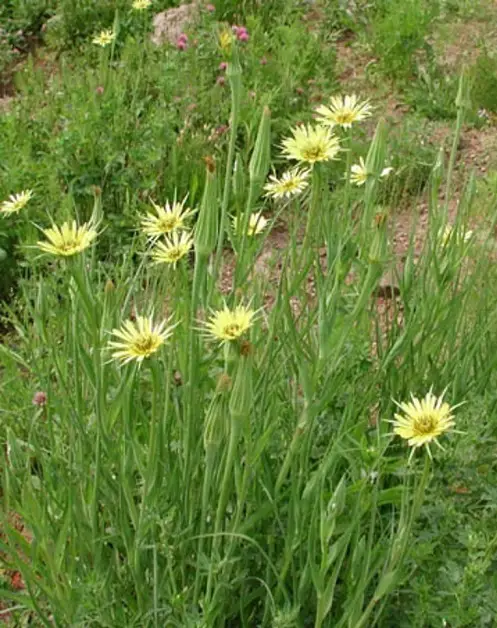
Botanical Name: Tragopogon dubius
How people see Yellow Salsify depends on where you live. In some parts, it’s considered a wildflower, but in others, it’s considered a weed. Regardless, it has yellow flowers with long petals and attracts butterflies.
14. Common St. John’s-Wort

Botanical Name: Hypericum perforatum
If you see a 2-3 feet tall weed covered in yellow flowers in July-August, chances are, it’s Common St. John’s Wort. Its foliage is oppositely arranged, and the flowers have five petals.
15. Lesser Celandine
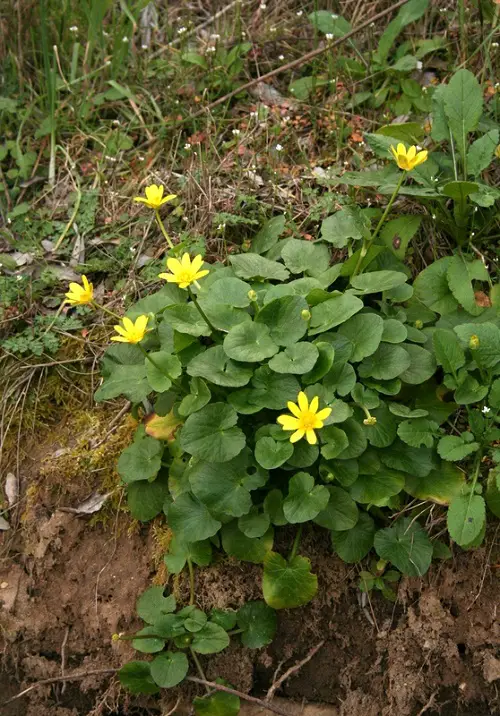
Botanical Name: Ficaria verna
Lesser Celandine is a typical woodland, lawn, and garden weed with tiny, yellow flowers. It also self-pollinates, so it can be hard to control once it’s established. Get rid of this one as soon as you spot it in your garden.
16. Yellow Sorrel
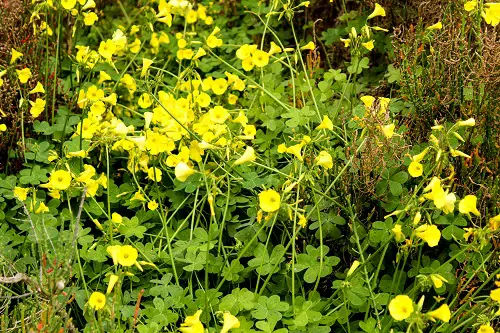
Botanical Name: Oxalis stricta
Yellow Sorrels have cup-shaped flowers and are edible weeds with a tangy, lemony flavor. They grow in moist, shaded areas and can also tolerate poor soil conditions, so they’re a great low-maintenance choice.
17. Cypress Spurge

Botanical Name: Euphorbia cyparissias
Cypress Spruge was introduced to North America in the 1960s as an ornamental plant, but today, it’s a toxic weed with yellow flowers that’s incredibly invasive. If you see it, uproot it, but wear a glove.
18. Black Medic
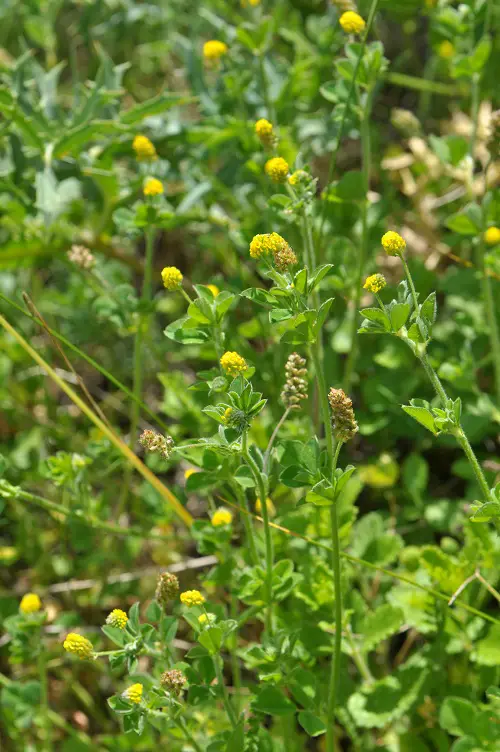
Botanical Name: Medicago lupulina
The Black Medic is a tiny weed plant with mini yellow flowers that you can often find on lawns and roadsides. It helps with nitrogen fixation, but if you want to get rid of it, use herbicides. If there’s only one or two, you can uproot them.
19. Golden Clover
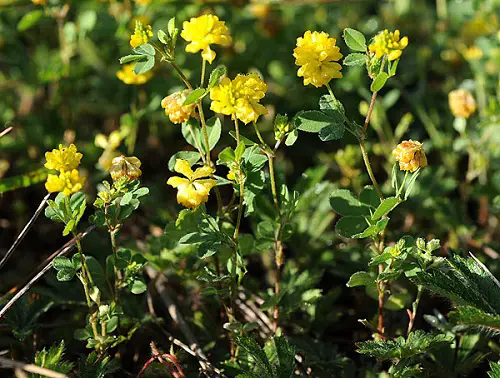
Botanical Name: Trifolium aureum pollich
Another yellow flowering weed that you will come across is the Golden Clover. It might be a weed, but it helps fix the nitrogen in the soil and makes great forage for livestock.
20. Creeping Cinquefoil

Botanical Name: Creeping cinquefoil
Creeping Cinquefoil is quite common and has bright yellow flowers that may be single or in clusters. It doesn’t grow more than 4 inches tall but can spread really quickly.
21. Butterweed
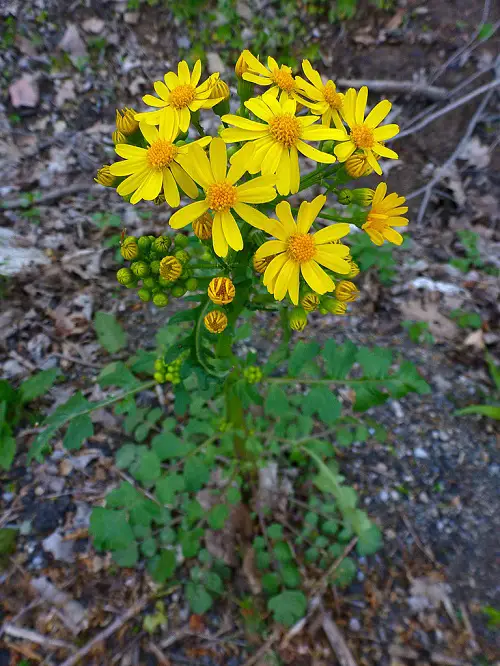
Botanical Name: Packera glabella
Butterweed might have pretty yellow flowers, but it is an invasive weed. It’s a prolific seeder and also releases chemicals in the soil, harming other plants.
22. Dandelion
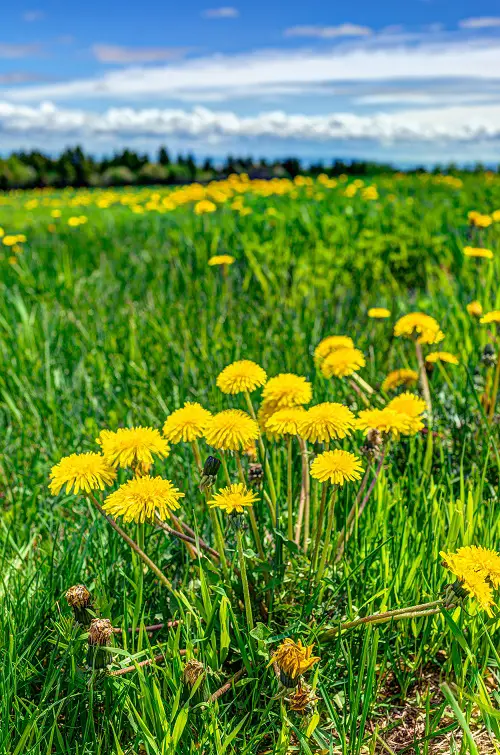
Botanical Name: Taraxacum officinale
If you want to grow Dandelions, do so in a pot because it can quickly crowd out other plants. Plus, the taproots are challenging to remove.
23. Skeleton Weed
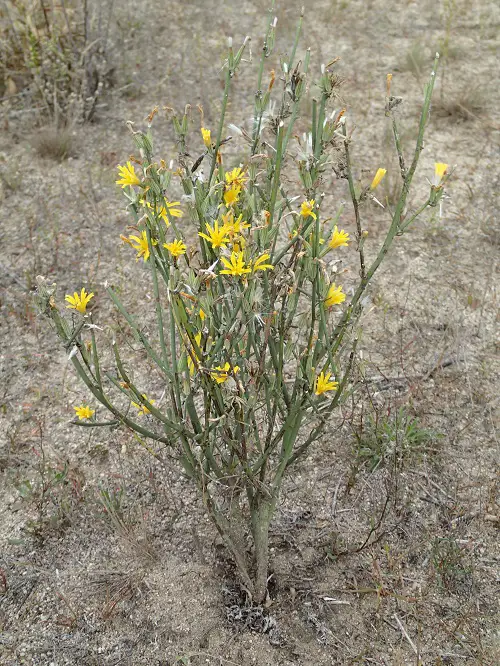
Botanical Name: Chondrilla juncea
Skeletonweed is so named because it’s really delicate. But it can grow 4 feet tall and spreads its seeds via the wind, germinating and spreading quickly.
24. Oxalis
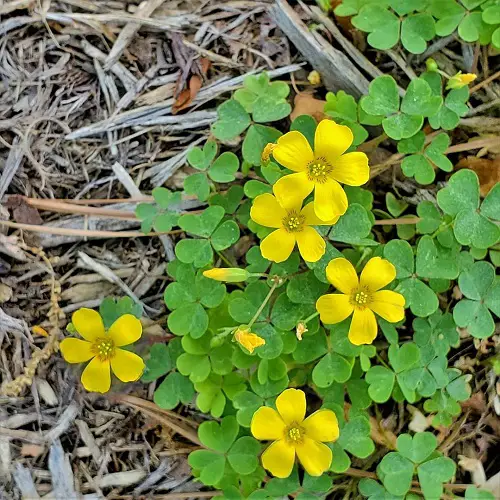
Botanical Name: Wood sorrels
Oxalis is one of the prettiest yellow flowered weeds, and it even has heart-shaped leaves. But it has oxalic acid in the leaves which can irritate your skin and harm pets.
25. Wintercress
Botanical Name: Barbarea vulgaris
Wintercress is a part of the mustard family and has cute little yellow flowers and dark green, lobed foliage. It’s more of an herb than a weed because you can eat it–it’s peppery.
26. Garden Loosestrife
Botanical Name: Lysimachia vulgaris
The Garden Loosestrife weed has tall stalks of yellow flowers and can grow up to 10 feet tall. The stems and leaves are covered in tiny hair, and it is prominent near riversides, streamsides, lakeshores, and wetlands.
27. Spanish Broom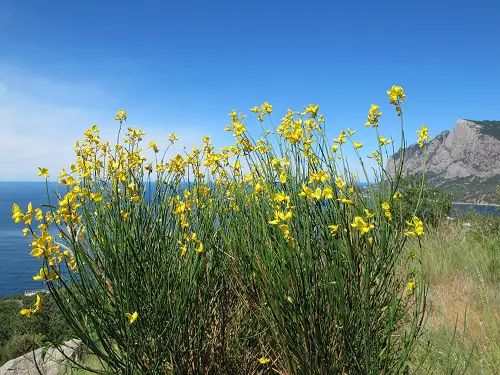
Botanical Name: Spartium junceum
Spanish Bloom looks good from a distance as it’s a 10-15 feet tall weed with yellow flowers. But it has an aggressive growth and forms dense stands, preventing sunlight from reaching other plants.
28. Sow Thistle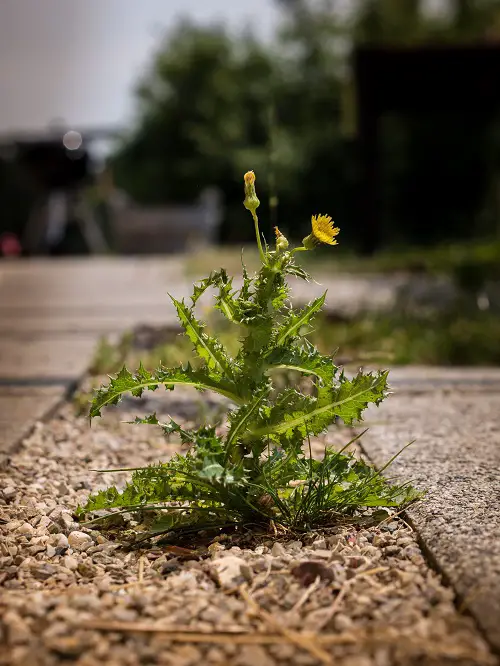
Botanical Name: Sonchus arvensis
Sow Thistle has prickly foliage and small yellow flowers, but it’s troublesome. It’s a perennial, so it keeps regrowing each year unless you remove its roots from the soil.
29. Yellow Toadflax 
Botanical Name: Linaria vulgaris
Yellow Toadflax is a Eurasian weed with bright yellow flowers that was introduced to North America in the 1600s. It’s considered a weed because it crowds out vegetation and competes with other plants.
30. Ragwort
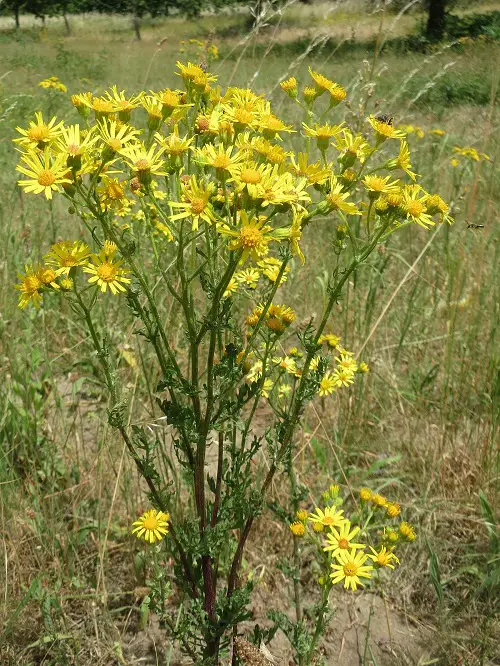
Botanical Name: Jacobaea vulgaris
Ragwort’s yellow flowers are common on trails and roadsides but it’s poisonous to livestock–it damages their liver and ultimately leads to death. It can also cause skin irritation in some people.
31. Grass-leaved Goldenrod
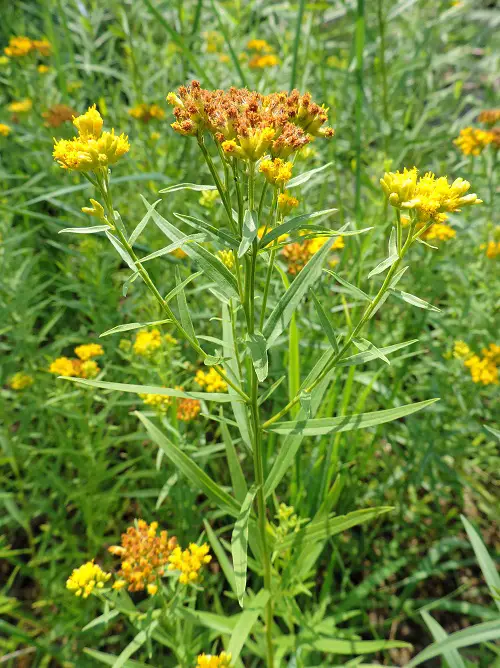
Botanical Name: Euthamia graminifolia
Grass-leaved Goldenrod is native to most of North America but is not found in Florida, Georgia, Arkansas, Nebraska, and Kansas. It’s a pretty weed with clusters of yellow flowers.
32. Yellow Hawkweed
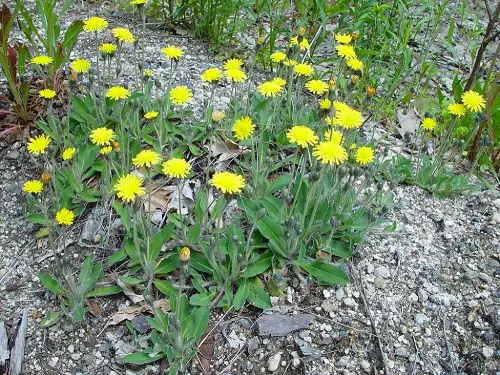
Botanical Name: Hieracium caespitosum
Yellow Hawkweed looks a lot like Dandelion, but its flowers have smaller heads. Plus, its stems are often hairy, and Dandelions are hairless.
33. Yellow Lantana
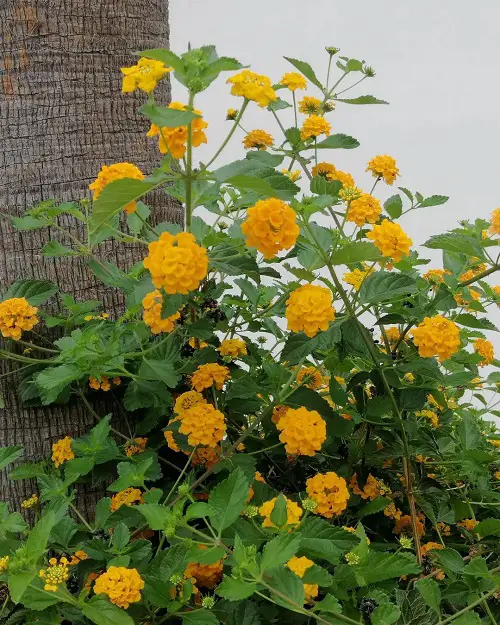
Botanical Name: Lantana camara
Yellow Lantana is a weed that will give you vibrant yellow flowers all through summer and fall. But there’s a catch–it’s toxic to humans and animals if ingested.


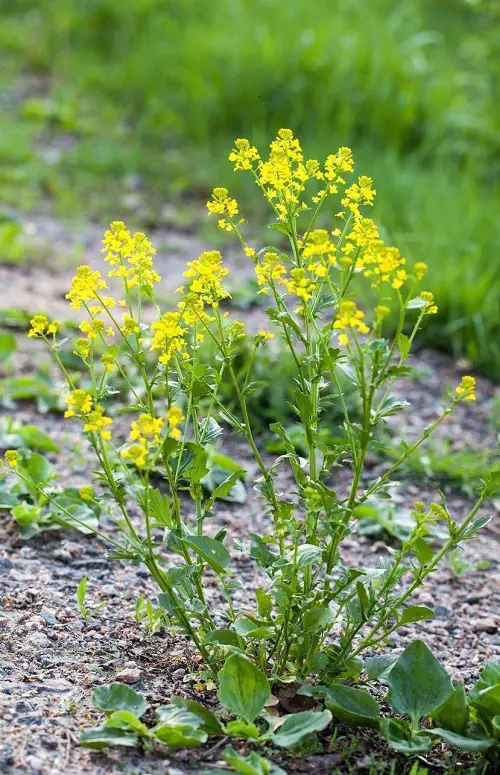
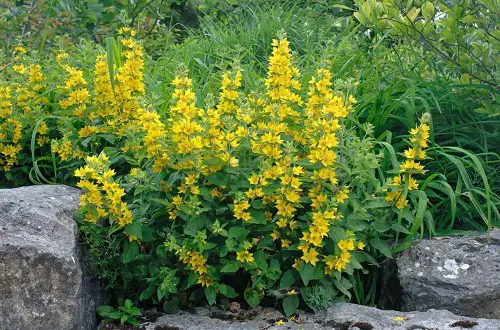

Ps. Any reason rangy mullein not included here? (Not that I blame you much lol – they can get huge, & last well past summer!) Tho the flowers last too – I just haven’t personally seen any of our many bees/butterflies on these giants..?